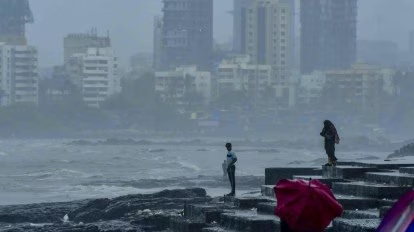For certain areas of Maharashtra, the India meteorological Department (IMD) has issued a cyclone warning. Cyclone ‘Shakti’ is heading towards Maharashtra. A high to moderate cyclone warning is in effect from October 3rd to October 7th. The announcement states that the alert is applicable to Mumbai, Thane, Palghar, Ratnagiri, Raigad, and Sindhudurg. During October 3-5, the North Maharashtra coast is expected to have wind speeds of 45 to 55 km per hour with gusts up to 65kmph.
Which places are under warning for cyclone Shakti?
For Mumbai, Thane, Palghar, Ratnagiri, Raigad, and Sindhudurg, meteorologists have issued warnings. Between October 3rd and 5th, winds of 45 to 55 km/h with gusts of up to 65 km/h are predicted. These are along the coast of North Maharashtra.
Until October 5, the Northern Maharashtra coast is anticipated to see turbulent waters due to the extremely rough sea conditions. It is highly recommended that fishermen stay on land and refrain from going out to sea.
Heavy to extremely heavy rainfall is expected in Maharashtra’s interior, especially in East Vidarbha and portions of Marathwada. According to the report of the India Meteorological Department (IMD). Because of the strong cloud formation and elevated atmospheric moisture, low-lying parts of the North Konkan are also at risk of flooding.

What is the current location of the cyclonic storm?
The weather office told PTI that as of Saturday, the cyclonic storm was situated about 420 kilometres from Dwarka in Gujarat. It was heading further into the Arabian Sea. According to the IMD, ‘Shakti’ is expected to move west-southwest and arrive in the northwest and adjacent west-central Arabian Sea by Sunday. ‘Shakti’ would subsequently recurve and move east-northeastward starting Monday morning, before gradually weakening, the IMD added.
What actions has the government taken?
Following the warning of Cyclone Shakti, the Maharashtra government has released preparation guidelines. Activating crisis management systems, creating evacuation plans for inhabitants in low-lying and coastal areas, public advisories, discouraging sea travel, and ensuring safety measures during periods of severe rainfall are all tasks that district administrations have been directed to complete.







Be First to Comment